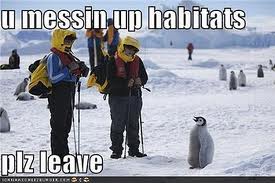 Dolphins are dolphins, right?
Dolphins are dolphins, right?
Well, not quite. The bottle-nose dolphin is probably the most famous, but what about Maui’s dolphin, not so famous.
Maui’s dolphin is the world’s smallest dolphin, and it’s found in only one place in the world, in the Tasman Sea off the west coast of New Zealand, and yes, it is endangered.
Protective measures are a ‘death sentence’ for rare dolphin say campaigners

The tiny Maui’s dolphins are only found off the west coast of New Zealand’s North Island
Measures to protect one of the world’s rarest dolphins have been denounced as a “death sentence” by campaigners.
Only 55 adult Maui’s dolphins are known to survive off the coast of New Zealand but their numbers are being threatened by fishing and disease.
The NZ government has proposed extending a protection zone to save the tiny, black and white cetaceans.
But researchers say the actions don’t go far enough and argue the Maui’s could be extinct within 20 years.
The Maui’s are the world’s smallest and rarest dolphins and only found on the west coast of New Zealand’s North Island.
They are closely related to another native species called Hector’s dolphins which survive in far greater numbers.
Net impact
In 2012 a survey commissioned by the New Zealand government’s Department of Conservation found that there were approximately 55 Maui’s left above the age of one.
They estimated there were around 20 breeding females. These give birth to one calf every two to four years.
Conservationists say the introduction of nylon filament nets in the 1970s has been a key factor in the decline of these dolphins.
The Maui’s inhabit coastal waters up to a depth of 100 metres but have come into contact with trawlers and with fishermen using set nets which have proved particularly destructive to these animals.

Maui’s and Hector’s dolphins enjoy surfing the waves in groups
The New Zealand government has recently announced new restrictions on fishing, extending the ban on the use of set nets by 350 square kilometres.
According to the conservation minister, Dr Nick Smith, the move will help reduce the biggest threat to the Maui’s.
“We are taking a cautious approach by banning set netting where there is clear evidence the Maui’s dolphins go while not unnecessarily banning fishing where they are not.”
But campaigners for the small cetacean and some conservationists are outraged by the government’s proposals, saying they amounted to a “death sentence” for the mammals.
They say that more than 75% of the Maui’s habitat still remains unprotected from set netting and trawling.
“These new measures will do nothing to stop the dolphins’ decline,” said Dr Elizabeth Slooten from the University of Otago, who has studied these creatures for 30 years.
Court threat
The Maui’s have been declared critically endangered by the International Union for the Conservation of Nature (IUCN), who passed a motion urging full protection in waters up to 100m deep.
The International Whaling Commission and the Society for Marine Mammology have also urged the New Zealand government to remove fishing nets from the Maui’s habitat.
The German conservation group, NABU International, is to challenge the decision in the New Zealand High Court and is calling for a boycott of seafood from the country.
“New Zealand’s failure to protect the world’s smallest and rarest dolphin is a bitter blow to marine conservation,” said Dr Barbara Maas from NABU.
“New Zealand has ignored the facts and the advice of the world’s scientific community to accommodate the commercial interests of its fishing industry,” she said.

Fishing nets are the biggest threat facing New Zealand’s native dolphins
As well as fishing, many campaigners are concerned about the activities of oil companies in New Zealand’s waters, particularly their use of seismic surveying, which can impact mammals including whales and dolphins.
In the new protection plan, the New Zealand government says it will deal specifically with this issue.
“A mandatory code of conduct will apply to any seismic survey work in all New Zealand fisheries waters,” said Dr Nick Smith.
Despite these steps, the Maui’s are likely to follow the path of the Yantze river dolphins and disappear within two decades unless more is done say campaigners.
“They are not doomed to extinction,” said Dr Maas.
“Genetic variability is still high, they can bounce back but saving them is a race against time.”












 Usually the news is bad, especially for those facing extinction. But, sometimes there is a ray of light that illuminates the future.
Usually the news is bad, especially for those facing extinction. But, sometimes there is a ray of light that illuminates the future.








 A judge in Brazil has ordered a halt to construction of a multi-billion-dollar dam project in the Amazon region.
A judge in Brazil has ordered a halt to construction of a multi-billion-dollar dam project in the Amazon region.
 Pro-democracy leader Aung San Suu Kyi, who recently joined the anti-dam campaign, welcomed the move, seen as a rare victory for social activists.
Pro-democracy leader Aung San Suu Kyi, who recently joined the anti-dam campaign, welcomed the move, seen as a rare victory for social activists.






















Recent Comments